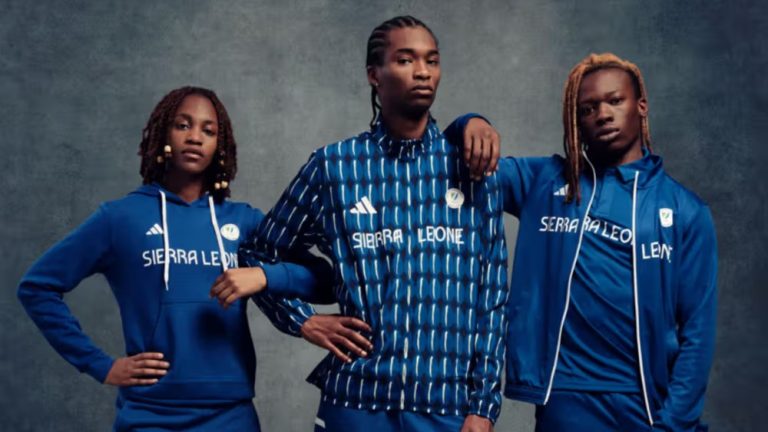Fashion is on the rise. And it looks great.
Style and sport have long been intertwined, but the Summer Olympics in Paris, which begin on Friday, will remind us just how great a combination they are.
As young people from around the world gather to compete in the City of Lights, fashion is in the spotlight more than ever. Luxury giant LVMH Moët Hennessy Louis Vuitton is acting as Premium Partner, and as always, brands from around the world, including America’s Ralph Lauren, France’s Berluti, Switzerland’s On and Japan’s Asics, are providing country-themed outfits for the competitors.
Antoine Arnault, LVMH’s head of communication, image and environment, told WWD: “Today’s athletes and sports convey values of excellence, passion and high standards that resonate with those of our artisans, who every day perform each movement with precision to create the most beautiful products in the world.”
Highlighting the like-minded excellence that top athletes and brands share can also open up highly lucrative avenues (see Nike’s long-standing collaboration with basketball giant Michael Jordan, which helped drive Jordan Brand sales of nearly $7 billion last year alone).
“From a strategic point of view, collaborations and partnerships with the sports world and athletes allow us to reach a wider audience than more ‘traditional’ ambassadors and campaigns,” Arnault said.
Fashion has received a lot of criticism, much of it rightly, for focusing too much on the surface and not enough on the inside, and combining it with sport reveals some of the more positive aspects of the industry.
While much of fashion marketing relies heavily on glamour, using athletes to market the brand allows it to highlight other elements, such as tenacity, performance and competitiveness.
Brandon Brown, president of the Sports Marketing Association, called sports “a unique medium that resonates around the world.”
“Almost everyone can relate to sports in some way, especially the Olympics, because there’s so much diversity in terms of background, skin color, sex and gender,” said Brown, who is also director of the Institute for Diversity and Ethics in Sport (TIDES) at the University of Central Florida’s College of Business.
German gymnasts in Paris. Getty Images
Brown said fashion brands gain at least three things from being associated with the Olympics.
“It’s a massive audience. It gives your brand exposure that you wouldn’t get any other way,” he said. At the last Summer Olympics in Tokyo, more than 3 billion people logged in to watch on TV or digitally, generating a total of 28 billion video views, according to the International Olympic Committee. This time around, NBCUniversal signed a $1.2 billion advertising deal for the 17 days of the Olympics. Brands that get attached to the Olympics can also benefit from something called “image transfer.” “The thing about the Olympics is that [that] “What is associated with one brand carries over to the associated brand,” Brown said. “You have an underdog team, you have a competitive team; [fashion] If brands want to associate themselves with them, they can target consumers who see themselves as competitive” and it’s a piece of history. “It only happens once every four years, so it means more because of Olympic standards. For a country to win a gold medal or the first gold medal in a country’s history, it’s a historic moment outside of sport as well. Brands can associate themselves with that. That’s great.”
It’s a powerful connection, and one that smart brands have understood for years.
LaunchMetrics estimated that when Ralph Lauren designed the official uniforms for the U.S. team at the Tokyo Summer Olympics, its Olympic sponsorship generated $14.8 million in media influence value on social media.
And Nike, regardless of its current difficulties, has become a big business through its close ties to the sports world, and it intends to continue to dominate the sector.
“The Paris Olympics is our perfect opportunity to share our vision for sport with the world, led by breakthrough innovation and announced by an can’t-miss brand campaign. Our brand storytelling will be bold and clear, with sport and athletes at the heart of it all, from our brand voice to our retail activations,” Nike president and CEO John Donahoe told investors last month.
And the opportunities are only getting bigger, he said.
“The definition of sport is expanding,” Donahoe says. “It’s a healthy lifestyle.” [are] It is becoming more and more accepted worldwide.”
And for some stars, such as 23-time Grand Slam women’s singles champion Serena Williams, fashion can contribute to their success.
“Since I was a little girl, I have used fashion as a way to express myself. Fashion has given me the confidence to step on the court and know who I am and where I’m going,” Williams said when receiving the CFDA Fashion Icon Award last year.
“The Bottom Line” is a business analysis column written by Deputy Editor Evan Clark, who has been covering the fashion industry since 2000. It appears every other Thursday.


